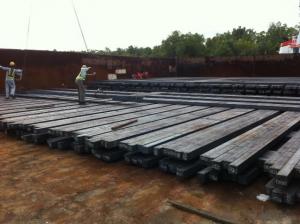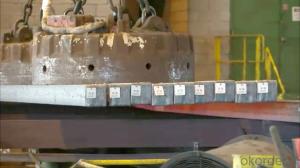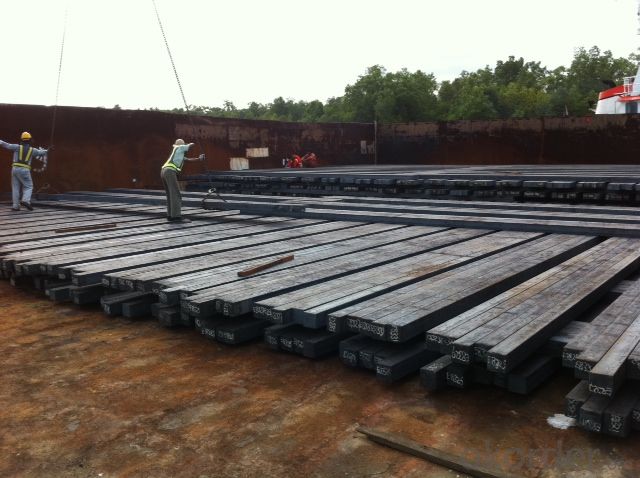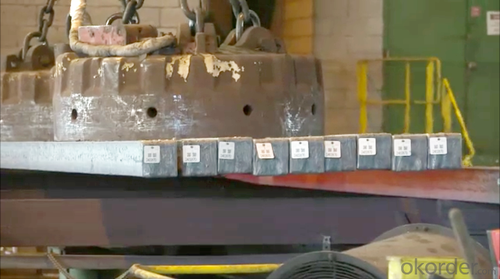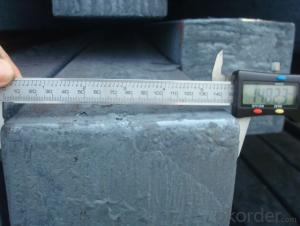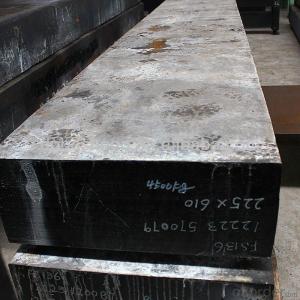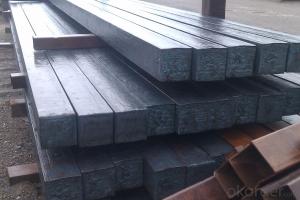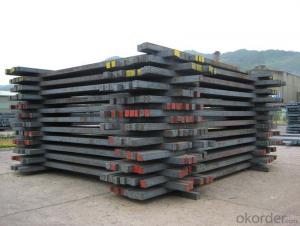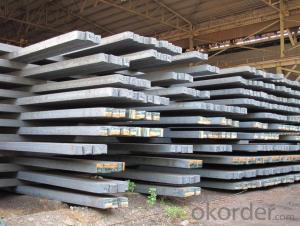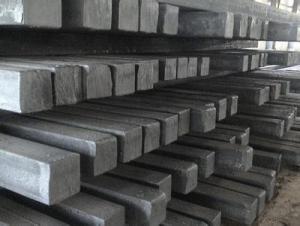Prime quality prepainted galvanized steel 740mm
- Loading Port:
- Tianjin
- Payment Terms:
- TT OR LC
- Min Order Qty:
- 100 m.t.
- Supply Capability:
- 10000 m.t./month
OKorder Service Pledge
OKorder Financial Service
You Might Also Like
Construction building material galvanized color prepainted cold
rolled steel coil
Prepainted steel sheet is coated with organic layer, which provides higher anti-corrosion property and
a longer lifespan than that of galvanized steel sheets.
The base metals for prepainted steel sheet consist of cold-rolled, HDG electro-galvanized and hot-dip
Alu-zinc coated. The finish coats of prepainted steel sheets can be classified into groups as follows:
polyester, silicon modified polyesters, polyvinylidene fluoride, high-durability polyester, etc
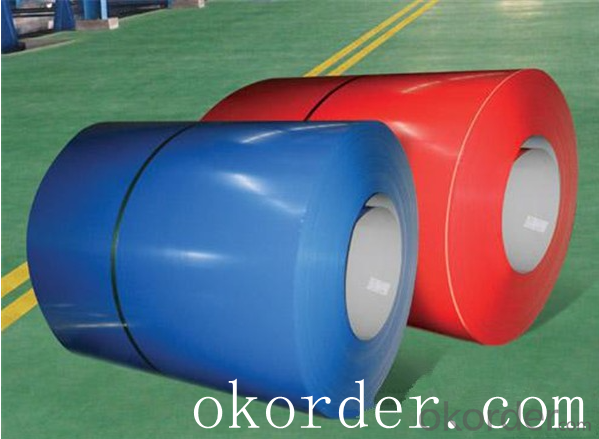
Standard and Grade :
Pre-paint galvanized steel coil | ||||
ASTM A755M-03 | EN10169:2006 | JISG 3312-2012 | ||
Commercial quality | CS | DX51D+Z | CGCC | |
Structure steel | SS GRADE 230 | S220GD+Z | CGC340 | |
SS GRADE 255 | S250GD+Z | CGC400 | ||
SS GRADE 275 | S280GD+Z | CGC440 | ||
SS GRADE 340 | S320GD+Z | CGC490 | ||
SS GRADE550 | S350GD+Z | CGC570 | ||
S550GD+Z | ||||
Application:
Outdoor | Roof, roof structure, surface sheet of balcony, frame of window, door of garage, rolled shutter door, booth, Persian blinds, cabana, etc |
Indoor | Door, isolater, frame of door, light steel structure of house, home electronic appliances, ect. |
Specifications
Commodity Name: Prepainted Galvanized Steel Coil
Standard: AISI, ASTM, DIN, GB, JIS
Grade: TDC52D+Z
Thickness 0.13-8.0mm
Width:600mm-1350mm
Zinc Coating:275g/m2
Polyester Coating Thickness:Top and Back coating thickness depend by Buyer Requirement.
Polyester Coating Type:2/2,1/2m,1/2.
Polyester Type: Polyester, silicone modified polyester, high durability polyester (HDP), polyvinylidene fluoride (PVDF)
Unit Roll Weight:5-20tons
Place of Origin Shanghai , China (Mainland)
Surface Treatment :Color Coated
Manufacture Progress:HRC-CRC-GALVANIZED-COLOR COATED
Application : Construction, electrical, transportation, steel plant, composite board plant, steel tile factory
Payment & Shipping Terms:T/T ,L/C, and FOB CHINA
Minimum Order Quantity: 25Tons
Packge Type: Moisture-proof paper inner,Steel outside,Bundle by steel rope.
Package in Container : Wood as a foot pad, wire rope reinforcement,PPGI steel coil tied together by steel rope.
- Q: What are the different types of steel billet cutting processes?
- There are several different types of steel billet cutting processes, including sawing, shearing, flame cutting, and plasma cutting.
- Q: Are steel billets used in the manufacturing of tools?
- Yes, steel billets are commonly used in the manufacturing of tools. Steel billets are semi-finished steel products that are typically hot-rolled or forged into various shapes, including bars, rods, and sheets. These billets serve as the primary raw material in tool manufacturing, as they provide the necessary strength, durability, and machinability required for producing high-quality tools. By shaping and machining the steel billets, manufacturers can create a wide range of tools such as wrenches, hammers, screwdrivers, drill bits, and cutting tools. The use of steel billets ensures that these tools possess the necessary hardness, toughness, and resistance to wear and tear, making them reliable and long-lasting. Therefore, steel billets play a crucial role in the production of tools, contributing to the overall efficiency and functionality of various industries.
- Q: How are steel billets used in the production of automotive braking systems?
- Steel billets are an important component in the production of automotive braking systems. These billets are essentially semi-finished steel products that are used as raw material for further processing. They are typically manufactured through the process of casting, where molten steel is poured into molds and allowed to solidify. In the context of automotive braking systems, steel billets are primarily used to manufacture brake rotors or discs. These components play a crucial role in the braking system as they provide the surface on which the brake pads make contact and create friction, ultimately stopping the vehicle. Brake rotors are subjected to high levels of stress and heat during braking, and therefore require a material that is strong, durable, and heat-resistant, which is where steel comes into play. Once the steel billets are obtained, they undergo a series of manufacturing processes to transform them into brake rotors. The first step involves heating the billets to a specific temperature, which helps to enhance their malleability and make them easier to shape. This is followed by a process called forging, where the heated billets are subjected to high pressure to shape them into the desired form of the brake rotor. This forging process helps to improve the strength and integrity of the steel, making it more resistant to wear and deformation. After forging, the brake rotor undergoes additional machining processes. This includes turning the surface of the rotor to ensure it is flat and smooth, thus providing an even contact surface for the brake pads. The rotor may also be drilled or slotted to improve heat dissipation and prevent the buildup of gases or debris between the pad and rotor. These machining processes help to achieve the required dimensions and surface finish of the brake rotor. Once the brake rotor has been manufactured, it is then assembled with other components of the braking system, such as brake calipers, pads, and hydraulic lines, to create a functional braking system. The steel billets used in the production of brake rotors ensure that the braking system is reliable, durable, and capable of withstanding the demanding conditions of automotive braking. In summary, steel billets are essential in the production of automotive braking systems as they are transformed into brake rotors, which are crucial components for stopping vehicles. The billets are heated, forged, and machined to achieve the desired dimensions, strength, and surface finish of the rotor. The end result is a reliable and durable braking system that ensures the safety and performance of the vehicle.
- Q: What is the chemical composition of steel billets?
- Steel billets typically contain iron as the primary element, along with varying amounts of carbon, manganese, silicon, sulfur, and phosphorus, which make up its chemical composition. The specific grade and intended use of the steel billets determine the exact composition, which may vary. Carbon, in small quantities ranging from 0.02% to 0.5%, is included to enhance the steel's strength and hardness. Manganese is commonly added to improve toughness and hardenability, while silicon aids in deoxidizing the metal and increasing its strength. Sulfur and phosphorus, impurities that can adversely affect the steel's mechanical properties, are typically kept at low levels. Furthermore, chromium, nickel, molybdenum, and other elements may be added in small amounts to enhance specific properties such as corrosion resistance or high-temperature strength.
- Q: How are steel billets used in the production of gear blanks?
- Steel billets are an essential component in the production of gear blanks. Gear blanks are the starting point for the manufacturing of gears. They are essentially the raw, unfinished pieces that will later be shaped and transformed into the final gear product. Steel billets, which are long, rectangular bars of steel, provide the necessary material for the creation of gear blanks. These billets are typically made from high-quality steel that possesses the required strength, durability, and machinability characteristics needed for gear production. To create gear blanks, the steel billets are first heated to a specific temperature to make them more malleable and easier to shape. The heated billets are then subjected to various forming processes, such as forging or extrusion, to transform them into the desired shape of the gear blank. Once the gear blank is formed, it undergoes further machining processes to refine its shape, dimensions, and surface finish. This may include operations such as turning, milling, drilling, or grinding. The precise machining ensures that the gear blank meets the required specifications for the final gear product. The gear blanks produced from steel billets serve as the foundation for the creation of various types of gears, such as spur gears, helical gears, bevel gears, or worm gears. These gear blanks undergo additional steps, such as heat treatment and surface hardening, to enhance their mechanical properties and increase their resistance to wear and fatigue. In summary, steel billets are integral to the production of gear blanks as they provide the raw material from which gears are formed. Through a series of heating, forming, and machining processes, the steel billets are transformed into gear blanks, which are then further processed to create the final gears used in various applications.
- Q: How are steel billets used in the manufacturing of rail tracks?
- Steel billets are used in the manufacturing of rail tracks as they serve as the raw material for the production of rails. These billets are heated and then rolled into the desired shape and size to create the rails. They provide the necessary strength, durability, and stability required to withstand the heavy loads and constant wear and tear experienced by rail tracks.
- Q: How are steel billets used in the production of marine equipment?
- Steel billets are an integral part of the production process for marine equipment. These billets, which are semi-finished steel products, serve as the raw material for manufacturing different components used in the construction of marine equipment such as ships, offshore platforms, and marine structures. Firstly, steel billets are used to create various structural elements of marine equipment, including hulls, decks, and bulkheads. These components provide the strength and stability necessary to withstand the harsh conditions of marine environments. The billets are heated and shaped through processes like rolling, forging, or extrusion to form the desired shapes and sizes of these structural elements. Additionally, steel billets are used to produce propeller shafts, rudders, and other propulsion system components. These parts are crucial for the movement and maneuverability of marine equipment. The billets are machined and further processed to create these specialized components, ensuring their durability and reliability in demanding marine conditions. Moreover, steel billets are employed in the production of marine equipment accessories such as anchors, chains, and mooring systems. These accessories play a vital role in ensuring the stability and safety of vessels and offshore structures. The billets are transformed into the required shapes and sizes through casting, forging, or machining processes to meet the specific requirements of each accessory. Furthermore, steel billets are also utilized in the manufacturing of marine equipment fittings, including valves, pipes, and fittings for fluid and gas systems. These components are essential for the proper functioning of various systems on board vessels, such as fuel, water, and hydraulic systems. The billets are processed and machined to create these fittings, ensuring their compatibility with marine-grade materials and their ability to withstand corrosive marine environments. In summary, steel billets are crucial in the production of marine equipment as they serve as the primary raw material for creating structural elements, propulsion system components, accessories, and fittings. By using steel billets, manufacturers can ensure the strength, durability, and reliability of marine equipment, enabling them to withstand the challenging conditions of the marine environment and ensuring the safety and performance of vessels and offshore structures.
- Q: What are the different sizes and shapes of steel billets?
- Steel billets come in various sizes and shapes, including square, rectangular, and round. The sizes can range from small billets measuring a few inches to larger ones measuring several feet in length and width. The specific size and shape of a steel billet depend on its intended use and manufacturing requirements.
- Q: What are the properties and characteristics of steel billets?
- Steel billets are semi-finished metal products that are typically used in the production of various steel products. They possess several properties and characteristics that make them suitable for such applications. Firstly, steel billets have a high strength-to-weight ratio, which makes them incredibly strong and able to withstand heavy loads. This strength is derived from the carbon content in the steel, which enhances its structural integrity. Secondly, steel billets have excellent heat conductivity, allowing for efficient heat transfer during various manufacturing processes. This property makes them ideal for applications that involve high-temperature operations, such as forging and rolling. Moreover, steel billets possess good machinability, meaning they can be easily shaped and formed into desired products. This property is essential in the manufacturing industry, as it allows for the production of complex and customized steel components. Steel billets also exhibit excellent ductility, which enables them to be stretched and molded without breaking. This characteristic is crucial in applications where the steel needs to be bent or formed into various shapes. Additionally, steel billets have a high resistance to corrosion, making them suitable for use in outdoor or corrosive environments. This property ensures the longevity and durability of steel products made from billets. Furthermore, steel billets can be easily welded, allowing for the fabrication of large and complex structures. Their weldability makes them versatile and adaptable to different construction and manufacturing needs. Lastly, steel billets have a consistent and uniform composition, ensuring high-quality and reliable steel products. This consistency is achieved through precise manufacturing processes and strict quality control measures. In conclusion, steel billets possess several properties and characteristics that make them highly desirable in the production of steel products. Their high strength, heat conductivity, machinability, ductility, corrosion resistance, weldability, and consistent composition make them essential in various industries, including construction, automotive, and manufacturing.
- Q: What are the potential applications of steel billets in the defense sector?
- Steel billets have several potential applications in the defense sector due to their strength, durability, and versatility. Here are a few potential applications: 1. Armored Vehicles: Steel billets can be used to manufacture the hulls and components of armored vehicles, providing enhanced protection against ballistic threats and explosive devices. The high strength and toughness of steel billets make them suitable for withstanding extreme conditions and impacts on the battlefield. 2. Weapon Systems: Steel billets can be utilized in the production of various weapon systems, such as artillery guns, tanks, and missile launchers. These components require materials that can withstand high pressures, heat, and mechanical stresses, which steel billets can provide. 3. Defense Infrastructure: Steel billets can be employed in the construction of defense infrastructure, including military bases, bunkers, and fortifications. Their high strength and resistance to corrosion make them suitable for withstanding environmental and physical challenges. 4. Naval Applications: Steel billets are crucial in the manufacturing of naval vessels, such as submarines, destroyers, and aircraft carriers. The ability of steel billets to withstand the harsh conditions of the marine environment, including corrosion and pressure, makes them an ideal choice for constructing these vessels. 5. Personal Protective Equipment (PPE): Steel billets can be used to produce body armor, helmets, and other protective gear for military personnel. The exceptional strength and impact resistance of steel billets offer enhanced protection against bullets, shrapnel, and other potential threats on the battlefield. 6. Military Infrastructure: Steel billets can be utilized in the construction of bridges, runways, and other critical military infrastructure. Their high load-bearing capacity and durability ensure the longevity and reliability of these structures, thereby supporting military operations. Overall, the potential applications of steel billets in the defense sector are diverse and crucial for enhancing the safety, efficiency, and effectiveness of defense forces. Their properties make them an invaluable material for various defense applications, ensuring the protection of personnel, equipment, and infrastructure in challenging operational environments.
Send your message to us
Prime quality prepainted galvanized steel 740mm
- Loading Port:
- Tianjin
- Payment Terms:
- TT OR LC
- Min Order Qty:
- 100 m.t.
- Supply Capability:
- 10000 m.t./month
OKorder Service Pledge
OKorder Financial Service
Similar products
Hot products
Hot Searches
Related keywords
